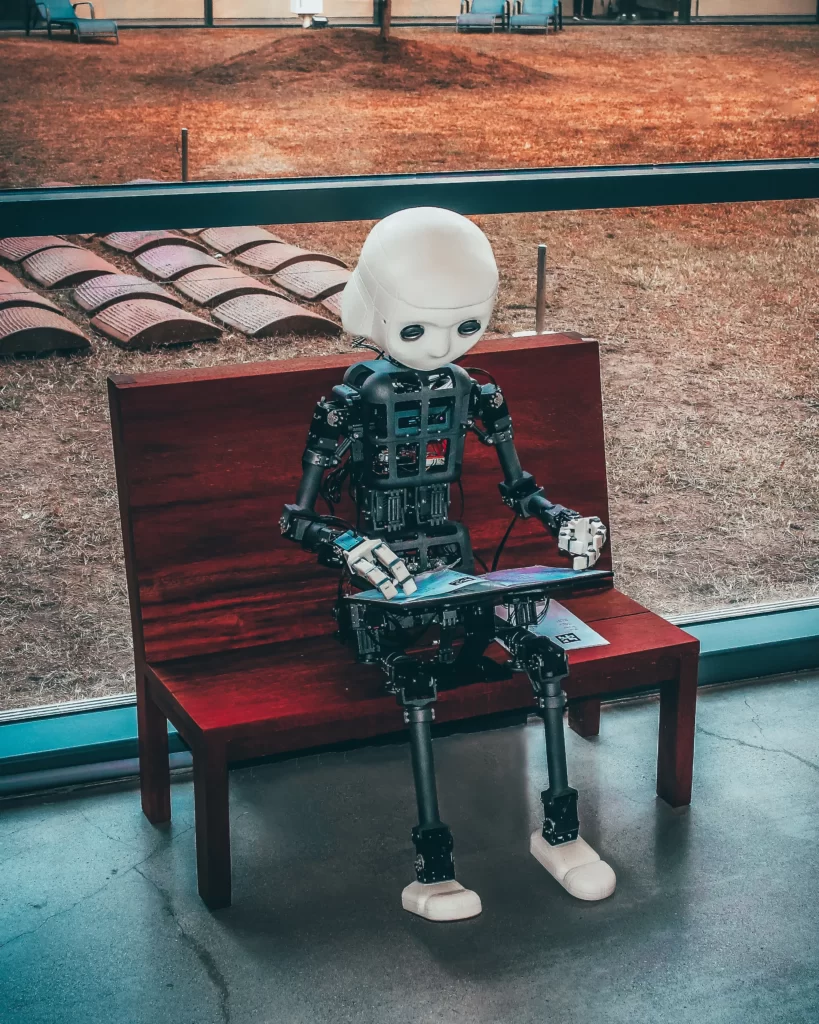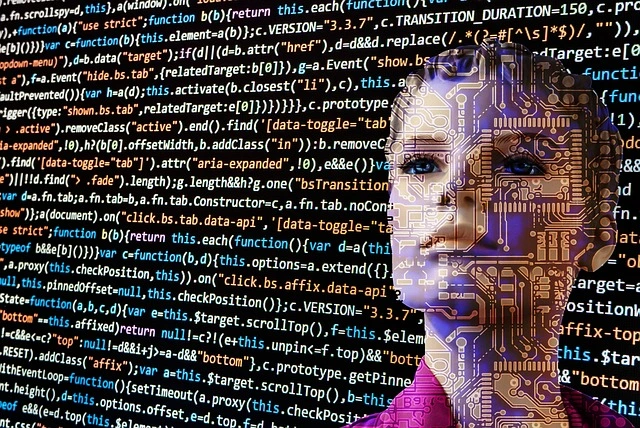Introduction
In an era characterized by rapid technological advancements, the fusion of Artificial Intelligence (AI) and robotics emerges as a transformative occurrence. This fusion has given rise to a wide array of uses that are revolutionizing various sectors and fundamentally altering the potential for cooperation between humans and robots. This piece explores the intricate realm of AI within robotics, revealing its varied applications and the auspicious path it charts for the times ahead.
Defining the Synergy: Artificial Intelligence in Robotics
At its core, Artificial Intelligence in robotics embodies the fusion of computational intelligence with mechanical prowess. This convergence empowers robots to exhibit cognitive abilities, perceive their surroundings, make informed decisions, and interact seamlessly with humans. The partnership between AI and robotics has transcended traditional automation, giving rise to machines that are capable of intricate tasks and human-like interactions.
Enhancing the Future: Artificial Intelligence and Robotics Integration
The amalgamation of AI and robotics has not only enhanced existing capabilities but has also paved the way for groundbreaking advancements. This integration has unlocked a new realm of possibilities, where robots cease to be mere tools and evolve into intelligent companions capable of learning, adapting, and contributing meaningfully to various domains.
The Evolution of Artificial Intelligence in Robotics
The inception of AI in robotics dates back to its early stages when the notion of crafting machines possessing human-like intelligence was first conceived. As time progressed, AI’s involvement in robotics transitioned from rudimentary rule-based systems to advanced neural networks replicating human cognitive processes. This progression has established the groundwork for the incredible applications we observe today.
Early Encounters: AI’s First Steps in Robotics
AI’s initial foray into robotics involved rule-based systems that allowed robots to follow predefined instructions. These early endeavors set the stage for future advancements by demonstrating the potential of AI to automate tasks that require logical decision-making.
Revolutionizing Automation: AI’s Impact on Modern Robotics
The integration of AI into modern robotics has resulted in a paradigm shift in automation. Robots equipped with AI algorithms can now perform complex tasks that demand adaptability and learning. This transformation has extended the scope of robotics beyond repetitive tasks, enabling machines to engage in activities that demand higher-order cognitive skills.
Advancements in AI-Powered Robotic Perception
Sensing the World: How AI Enables Robots to Perceive Surroundings
One of AI’s most impactful contributions to robotics is in the realm of perception. Through sensors and data analysis, robots infused with AI can perceive and interpret their surroundings in real-time. This ability is essential for tasks that require understanding and interaction with dynamic environments.
Visualizing with Precision: Role of AI in Robotic Vision Systems
AI’s role in robotic vision systems has enabled machines to process visual data, recognize objects, and even identify anomalies. This capability is crucial in industries such as manufacturing, where robots need to detect defects or variations in products.
Intelligent Robotic Movement and Control
Navigating Complexity: AI-Driven Path Planning and Navigation
The fusion of AI with robotics has empowered machines with intelligent movement and navigation capabilities. Robots can analyze complex environments, calculate optimal paths, and avoid obstacles, making them adept at tasks that demand precise movement.
Mastering Dexterity: Robotic Manipulation Enhanced by AI
AI has revolutionized robotic manipulation by imbuing robots with dexterity comparable to human hands. This advancement has applications in areas such as surgery, where robots can perform intricate tasks with precision.
Cognitive Abilities in AI-Infused Robots
Thinking Machines: How AI Imbues Robots with Cognitive Capabilities
AI has elevated robots beyond their traditional roles as tools by instilling them with cognitive abilities. These machines can process information, reason, and learn from experiences, allowing them to adapt to changing situations and improve their performance over time.
Problem-Solving Prowess: AI’s Role in Decision-Making for Robots
AI’s ability to analyze data and make informed decisions has transformed robots into problem-solving entities. Robots can evaluate multiple options, consider various factors, and choose the most optimal course of action, even in complex scenarios.
Collaborative Human-Robot Interaction
Bridging the Gap: AI-Enhanced Communication between Humans and Robots. AI-driven robots have bridged the gap in human-robot interaction by understanding and responding to human cues. Natural language processing and sentiment analysis enable robots to engage in meaningful conversations and comprehend user intent.
Working Hand in Claw: Collaborative Tasks with AI-Backed Robots
Collaboration between humans and AI-backed robots has become seamless, with machines understanding human instructions and adapting to dynamic environments. This collaborative approach amplifies efficiency and extends the scope of tasks that robots can perform.
AI-Driven Learning and Adaptation in Robotics
From Novice to Expert: How Robots Learn and Improve Using AI. AI has transformed the learning process for robots, enabling them to acquire skills through experience. Through iterative learning and data analysis, robots can continually improve their performance and expand their capabilities.
Flexibility Redefined: Adaptation and Versatility in AI-Powered Robots
AI-powered robots are exceptionally adaptable and capable of adjusting to new tasks and environments with minimal intervention. This versatility is vital in dynamic industries where robots need to quickly switch between different functions.
Applications of AI in Healthcare Robotics
Surgical Precision: AI-Assisted Robotic Surgery
AI’s integration into healthcare robotics has led to precise and minimally invasive surgeries. Surgical robots equipped with AI can analyze patient data, assist surgeons in real time, and enhance the accuracy of procedures.
Enabling Mobility: AI-Powered Prosthetics and Exoskeletons
AI-driven prosthetics and exoskeletons have restored mobility and independence to individuals with limb impairments. These devices adapt to users’ movements and intentions, enabling more natural and intuitive control.
AI and Robotics in Manufacturing and Automation
Factory of the Future: Robotics and AI in Smart Manufacturing
The concept of smart manufacturing is realized through AI and robotics integration. Robots equipped with AI optimize production processes, monitor equipment health, and streamline operations for maximum efficiency.
Streamlining Tasks: Automation with AI-Infused Robotic Workforces
AI-backed robotic workforces are transforming industries by automating tasks that were once labor-intensive. These robots can work autonomously, leading to increased productivity, reduced errors, and cost savings.
AI-Powered Drones and Autonomous Vehicles
Taking to the Skies: Drones with AI Navigation and Surveillance
Drones equipped with AI navigation systems can autonomously navigate complex environments, map terrains, and gather data for various applications, including surveillance, agriculture, and disaster response.
The Road Ahead: Enhancing Vehicles with AI-Driven Automation
AI’s impact on autonomous vehicles is evident in their ability to perceive and navigate the road environment. These vehicles use AI algorithms to detect obstacles, interpret traffic patterns, and make split-second decisions for safe driving.
Robotics in Hazardous Environments with AI
Tackling Danger: AI-Enabled Robots in Search and Rescue Operations
AI-driven robots are invaluable in hazardous environments such as disaster-stricken areas. These robots can access tight spaces, withstand extreme conditions, and assist in locating survivors, minimizing human risk.
Beyond Human Limits: Exploring Extremes with AI-Infused Robots
Robots with AI capabilities extend human reach into extreme environments, including deep sea and outer space. These robots conduct research, gather data, and perform tasks that are too dangerous for humans.
The Ethical Dimensions of AI-Driven Robotics
Ensuring Responsibility: Addressing Ethical Concerns in AI-Infused Robots
The integration of AI in robotics raises ethical questions regarding safety, privacy, and job displacement. Ensuring responsible development and use of AI-driven robots is essential to mitigate potential risks.
Human-Robot Coexistence: Ethical Considerations in AI-Robotic Interaction
The interaction between humans and AI-driven robots introduces complex ethical considerations. These include establishing clear guidelines for robot behavior, safeguarding human well-being, and fostering trust.
FAQs
Q1: How does AI contribute to the capabilities of modern robots?
AI equips modern robots with cognitive abilities, enabling them to learn, adapt, and make informed decisions.
Q2: What role does AI play in enhancing robotic perception?
AI enhances robotic perception by processing sensory data, recognizing objects, and interpreting complex environments.
Q3: Can AI-powered robots learn from their experiences?
Yes, AI-powered robots can learn from their experiences through data analysis, allowing them to improve their performance over time.
Q4: What are some healthcare applications of AI in robotics?
AI in healthcare robotics includes precise surgical procedures and the development of AI-powered prosthetics and exoskeletons.
Q5: How does AI impact manufacturing and factory automation?
AI streamlines manufacturing processes by optimizing production, monitoring equipment health, and automating tasks for efficiency.
Q6: What are the challenges of using AI in hazardous environments with robots?
AI-driven robots face challenges like navigating complex and dangerous terrains, maintaining functionality in extreme conditions, and ensuring reliable communication.
Q7: What ethical considerations arise from the integration of AI in robotics?
Ethical concerns include the responsible development of AI, ensuring privacy, addressing job displacement, and establishing guidelines for human-robot interactions.
Conclusion
The Promising Trajectory: Future Prospects of AI in Robotics
With the evolution of technology, the scope of AI in robotics keeps broadening, offering a future defined by originality and change. The merging of AI has propelled robots to unprecedented levels, empowering them to cooperate with humans, assimilate knowledge from encounters, and maneuver intricate surroundings. The path of AI in robotics is characterized by ongoing creativity, unveiling opportunities that were previously thought unachievable.



